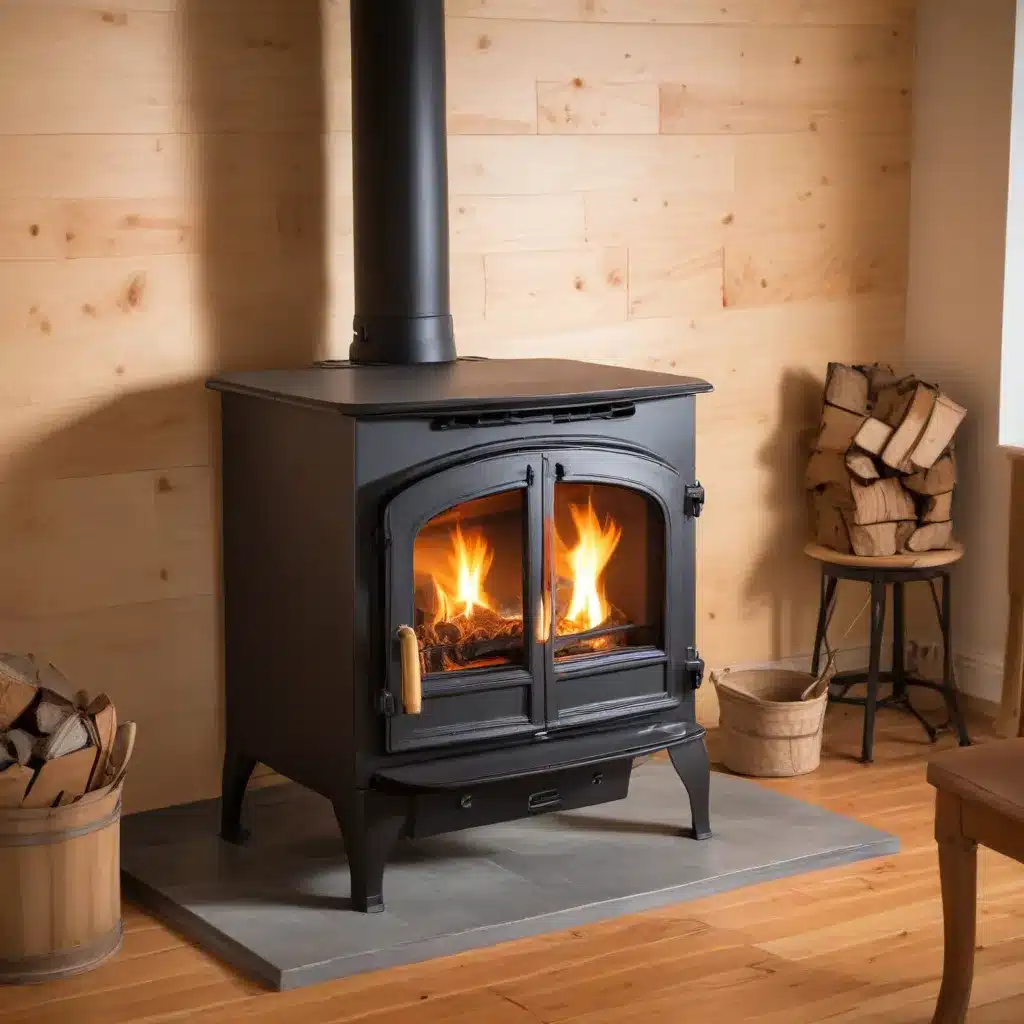
Navigating the Transition to a Renewable Energy Future
The global energy landscape is undergoing a profound transformation, driven by the urgent need to combat climate change and enhance energy security. As the world strives to limit global warming to 1.5°C, the role of renewable energy sources, such as wood stoves, has become increasingly vital. This article explores the innovations and best practices that are shaping the future of wood stove heating, offering practical insights and strategies for homeowners, contractors, and policymakers alike.
Embracing Fuel Flexibility: The Key to Sustainable Heating
Wood stoves have long been a popular choice for home heating, offering an efficient and often cost-effective solution. However, as the energy transition accelerates, the need for fuel flexibility has become paramount. Wood stove technology has evolved to accommodate a wider range of biomass fuels, including agricultural residues, energy crops, and even waste streams. This flexibility not only reduces reliance on traditional wood sources but also opens up new avenues for emissions reduction and sustainable energy supply.
One innovative approach is the development of multi-fuel wood stoves, which can seamlessly transition between different biomass feedstocks based on availability and cost. These advanced stoves incorporate sophisticated combustion control systems, ensuring optimal efficiency and emissions performance regardless of the fuel source. By empowering homeowners to choose from a diverse array of renewable fuels, multi-fuel wood stoves contribute to the resilience and sustainability of local heating systems.
Emissions Reduction: Cleaner Burning, Cleaner Air
Alongside fuel flexibility, the wood stove industry has made significant strides in reducing emissions and improving air quality. Advanced combustion technologies, such as secondary air injection and catalytic converters, have significantly reduced particulate matter, carbon monoxide, and other harmful pollutants emitted by wood stoves. These innovations not only enhance the environmental impact of wood heating but also contribute to improved indoor and outdoor air quality, benefiting both homeowners and their communities.
Policymakers have also played a crucial role in driving emissions reductions in the wood stove sector. Stricter emissions standards, such as the Environmental Protection Agency’s (EPA) regulations in the United States, have pushed manufacturers to develop cleaner-burning appliances. As a result, modern wood stoves are now capable of achieving emissions levels that are a fraction of their older counterparts, making them a more attractive and environmentally responsible heating option.
Enhancing Energy Efficiency: Maximizing the Heat Output
In addition to fuel flexibility and emissions reduction, the wood stove industry has also focused on improving energy efficiency. Innovations in stove design, insulation, and heat distribution systems have led to significant improvements in heat output and overall system performance. By maximizing the heat transfer from the stove to the living space, these advancements ensure that homeowners can enjoy the warmth and ambiance of a wood fire while minimizing energy waste and costs.
Proper installation and maintenance are also critical factors in ensuring the optimal performance and energy efficiency of wood stoves. Homeowners and contractors alike must be well-versed in best practices, such as proper chimney sizing, air supply considerations, and regular cleaning and servicing. By addressing these fundamental aspects, wood stove users can maximize the benefits of their heating systems and contribute to the overall sustainability of their energy usage.
Sustainable Heating Solutions: The Role of Wood Stoves
As the world continues to grapple with the challenges of climate change and energy security, the role of wood stoves in the broader heating landscape has become increasingly important. Wood stoves offer a renewable, carbon-neutral heating option that can be seamlessly integrated into a diversified energy portfolio. By embracing fuel flexibility, reducing emissions, and enhancing energy efficiency, the wood stove industry is positioning itself as a key player in the transition to a sustainable energy future.
Homeowners, contractors, and policymakers alike have a vital role to play in this transformation. By investing in modern, efficient wood stove technologies, homeowners can contribute to the reduction of greenhouse gas emissions and support the growth of local renewable energy sources. Contractors, on the other hand, must stay informed about the latest advancements and best practices to ensure that wood stove installations and maintenance are carried out to the highest standards.
Policymakers, meanwhile, can further catalyze the transition by implementing supportive policies and incentives that encourage the adoption of clean, efficient wood stove technologies. Measures such as tax credits, rebate programs, and emissions reduction targets can help drive the widespread deployment of these sustainable heating solutions.
By working together, we can harness the power of wood stove heating to create a more resilient, equitable, and environmentally responsible energy future. The innovations and best practices highlighted in this article offer a glimpse into the exciting possibilities that lie ahead, paving the way for a cleaner, more efficient, and more sustainable approach to home heating.
Conclusion: A Brighter, Warmer Future
The energy transition is a complex and multifaceted challenge, but the wood stove industry has demonstrated its ability to adapt and innovate in the face of change. By embracing fuel flexibility, reducing emissions, and enhancing energy efficiency, wood stoves are poised to play a crucial role in the shift towards a renewable energy future.
As homeowners, contractors, and policymakers collaborate to implement these best practices and harness the potential of wood stove heating, we can look forward to a brighter, warmer future – one that is cleaner, more resilient, and more sustainable for generations to come. Visit https://woodstoveheaters.com/ to learn more about the latest advancements and opportunities in the world of wood stove heating.


